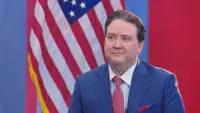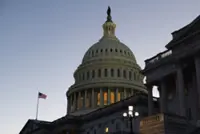Mainstream global opinion since Trump won the US presidential election has been that his administration will bring instability to the world by imposing stiff import tariffs and abandoning America’s role as a security provider. China's President Xi Jinping can capitalise on it. —AFP
HIGH tariffs and a withdrawal from providing global security are the two primary paths incoming US president Donald Trump has laid out to achieve his goal of making America great again. Therein lies a significant political and economic opportunity for China.
For a start, Trump cannot aim these two policy thrusts solely at China; that would not help his goal at all. Making America great again has its own logic, which is to restore the country as the world’s leading manufacturing power. Only by protecting its domestic market and acquiring vast external funds can Trump ultimately serve his goal.
The United States’ social system produced Wall Street, which led the country to develop and operate its economy along financial capitalist lines. Wall Street became an outsize part of the US economy and society.
In this context, the decline of US manufacturing was inevitable, as was the loss of its crown as the world’s top industrial power. This has led to traditional manufacturing towns in the United States suffering from economic decline, unemployment and lower living standards.
Meanwhile, China, with its system of centralised governance and low labour costs, successfully developed its modern manufacturing base, becoming a serious economic competitor to the US. The US ruling elite came to see China, a country with a population of 1.4 billion and governed by the Communist Party, as a significant threat.
Trump’s emphasis on shoring up US manufacturing and jobs is not new. Former president Barack Obama tightened market regulation after the 2009 global financial crisis and made job creation, particularly in skilled manufacturing, a priority. US President Joe Biden adopted some of Trump’s policies, such as his tariffs on China.
To fund the restoration of America as a leading manufacturing power, Trump’s strategy, it would appear, is to generate massive revenues through high tariffs on imports while turning US security support for its allies into a strictly paid-for service, thereby creating even more revenue. Despite facing opposition from the political, business and academic elite, Trump’s plans have broad support from the American public, going by his strong election victory.
A large swathe of the US middle and lower classes identify with Trump’s logic of revitalising America and support his high-tariff, no-free-security proposals.
There is no indication of Trump changing his mind but even if does, he has boxed himself into a corner. China will not be the sole target and dissatisfaction with Trump’s America will undoubtedly grow, particularly from those countries that have enjoyed low tariffs and generous US protection – many of these will be small and medium-sized developed economies.
It will disrupt the dynamics that drive the global economy, causing turmoil and confusion, at least initially. This, in turn, will provide China with significant political and economic opportunities.
America’s historical contributions to the world have mainly been in three areas.
First, its previously low tariffs gave the world access to its vast market. Second, US security assurances and support, including for South Korea, Japan and fellow Nato members, allowed countries to count on US protection while they focused on developing their economies. Third is the US tradition of opening its doors to asylum seekers and immigrants, standing up for human rights and delivering humanitarian aid.
Trump, who assumes the mantle of US president come January, will change these dynamics. America’s abdication as the world’s sole superpower will open up a tremendous diplomatic and economic opportunity for China.
In particular, his plans to impose universal tariffs of 10-20 % on all imports, with Chinese goods to be taxed at least 60%, could provoke a global retaliation.
Major allies like the European Union, Japan and South Korea, already cautious about Trump’s trade policies after his first term, may well be forced to impose retaliatory tariffs on US imports. This could spark a broader trade war, isolate the US, damage its alliances and diminish its economic influence.
Such a situation would benefit China’s international standing, especially if China responds by lowering its tariffs and easing its foreign investment regulations.
The key here is how China manages the situation, particularly through its ministry of foreign affairs, in contrast with Trump’s proposals to offer incentives for investment in American manufacturing and to reframe security support for US allies in terms of the “protection money” he wants them to pay.
China will not be immune to Trump’s tariff threat, but Beijing has learned its lesson after Trump’s first term and is well prepared.
China can mitigate the impact through third-party re-export trade, investments in third-party countries or even direct investments in the US. It can also counteract Trump’s tariffs with its own.
For China, the key to navigating its relations with the US lies in understanding where the points of conflict between Trump and the world exist, and how adept Beijing will be in leveraging third-party negotiations.
Can China’s diplomatic team handle this? Time will tell. — SCMP
Cao Xin is senior researcher of The Charhar Institute. Cao Zhong is a senior student at the School of Law, City University of Hong Kong.





